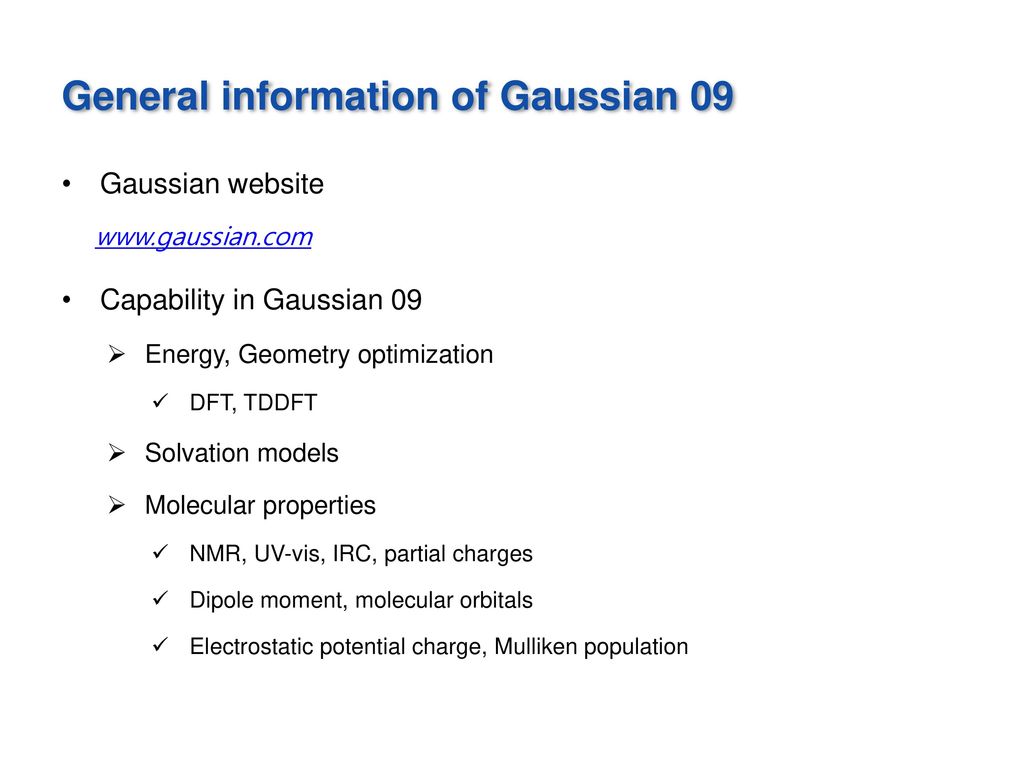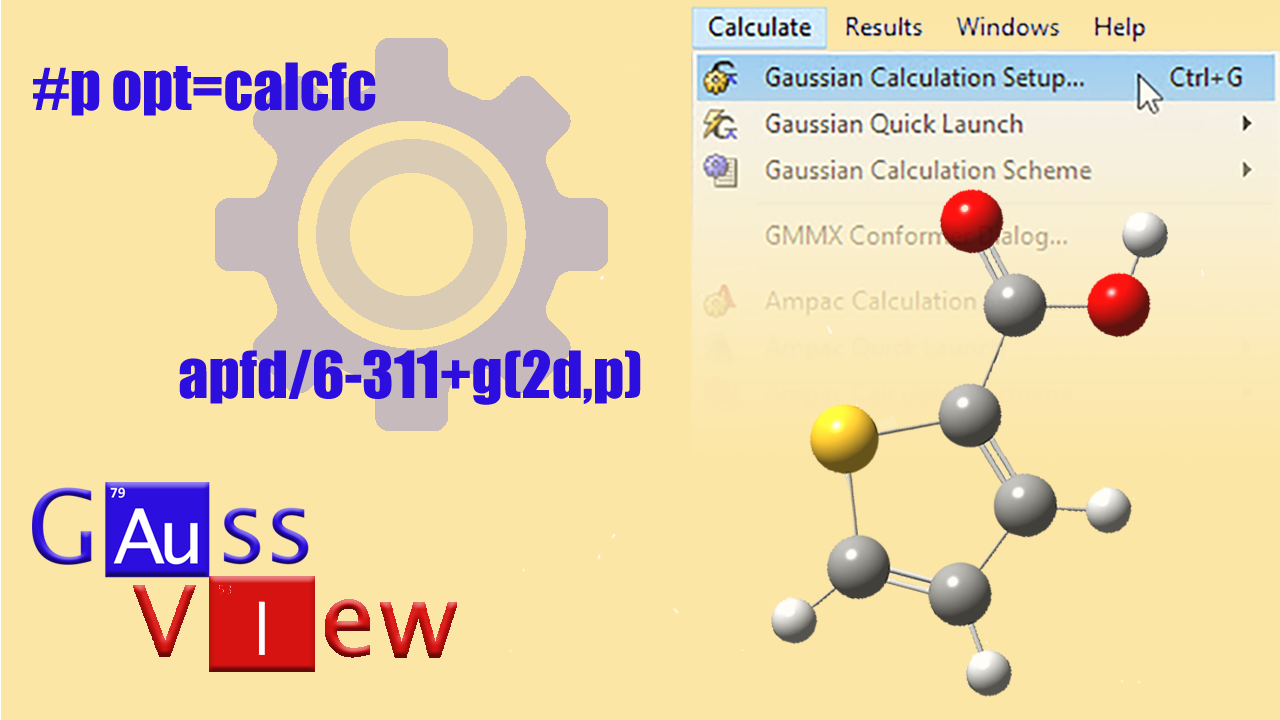

- #Gaussian software tutorial how to#
- #Gaussian software tutorial code#
- #Gaussian software tutorial Pc#
DifficultyĪdvance Gaussian Elimination implemented in C++ programming using Code :: Blocks For the GCC Compiler, you can download a MinGW compiler from. If you do not have the following software, you can download the Code:: Blocks software from. An installed GCC Compiler and Code:: Blocks Open Source cross-platform IDE software.

#Gaussian software tutorial Pc#
#Gaussian software tutorial how to#
As for how to use HPC environment on VCL nodes please visit HPC-VCL. You can send an e-mail request to be added to "vcl" group. To use the HPC environment on VCL nodes you need to be in the HPC "vcl" group. You should use the HPC environment on VCL nodes to do GUI, such as GaussView. GaussView is a GUI utility and you should not use a GUI on HPC login nodes. Generally, Gaussian jobs with more atoms can effectively use This example the input file contains the following content: The input file h2o.in should be in the same directoryĪs the job script and that should be your current workingĭirectory when you issue the bsub command. Specified in the g16 input file (file h2o.in specified below) should match the number ofĬores requested with the "-n" option in the job script. (Gaussian is a shared memory code and cannot do distributed memory parallel computationsĪcross multiple nodes.) The number of processors Gaussian can do parallel computations using multiple cores on a single Gaussian is resource intensive, and using Gaussian on a shared compute node could potentially affect other users. The "-x" requests the exclusive use of the node. That all cores are on one compute node, needed because Gaussian can only The following content on the line is a bsub flag. The #BSUB directive at beginning of a line indicates

The job script for a g16 run would look similar to the Also, Gaussian has an auxiliary GUI program GaussView for you to do visualization. Submitting it the queuing system using the bsub This is done by creating a job script and (In using g09 you don't need that.)Īll non-trivial use of Gaussian must be done on Henry2Ĭompute nodes. To request compute nodes with cores having AVX support. Thus, in your job script, you need to have a line of NOTE: g16 needs processor to support AVX instructions. On Henry2: g09 (revision D.01) and g16 (revision A.03). There are currently two versions of Gaussian available Select the "Request Access"īutton under Gaussian on HPC Software page to To access Gaussian you must sign a licenseĪcknowledgement form.


 0 kommentar(er)
0 kommentar(er)
